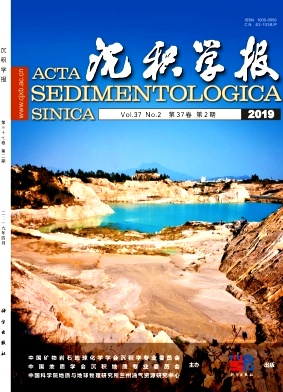Ice Volume Cycle Characteristics and the Environmental Significance of the Initial 234U/238U Ratio Inferred from Stalagmites: A case study from Sanbao Cave, Hubei
doi: 10.14027/j.issn.1000-0550.2018.123
- Received Date: 2018-02-02
- Rev Recd Date: 2018-03-28
- Publish Date: 2019-04-10
-
Key words:
- stalagmite /
- initial 234U/238U /
- cycle /
- paleoclimate /
- Sanbao Cave
Abstract: Obvious 23 000-year-long cycles have been identified in stalagmite oxygen isotope records, but 100 000-year cycles are also widely recorded in other geological records. Based on the analysis of isotopic data for 20 stalagmites from Sanbao Cave, Hubei, it is found that the initial 234U/238U ratio has a strong cycle of 100 000 years in the period 640.3-299.6 ka B.P. The values of (234U/238U)0 increases during interglacial periods and decreases in glacial periods. The 100 000-year cycle of (234U/238U)0 corresponds closely with changes in global ice volume, loess grain size and atmospheric CO2 concentration. This coherence indicates that the changes of global ice volume and CO2 concentration had important effects on the enrichment and migration of geochemical elements in karst areas. These observations indicate that the oxygen isotope record for the precession cycle in stalagmites is independent of the influences of high-northern-latitude ice volume and global greenhouse gases, suggesting a direct effect of solar radiation change on low-latitude water circulation. Corresponding changes of (234U/238U)0, oxygen isotope and insolation in terminations support the hypothesis that the northern hemisphere summer insolation modulate the glacial to interglacial cycle.
| Citation: | CUI TianFeng, DUAN FuCai, ZHANG WeiHong, DONG JinGuo, ZHU LiDong. Ice Volume Cycle Characteristics and the Environmental Significance of the Initial 234U/238U Ratio Inferred from Stalagmites: A case study from Sanbao Cave, Hubei[J]. Acta Sedimentologica Sinica, 2019, 37(2): 301-308. doi: 10.14027/j.issn.1000-0550.2018.123 |






 DownLoad:
DownLoad: